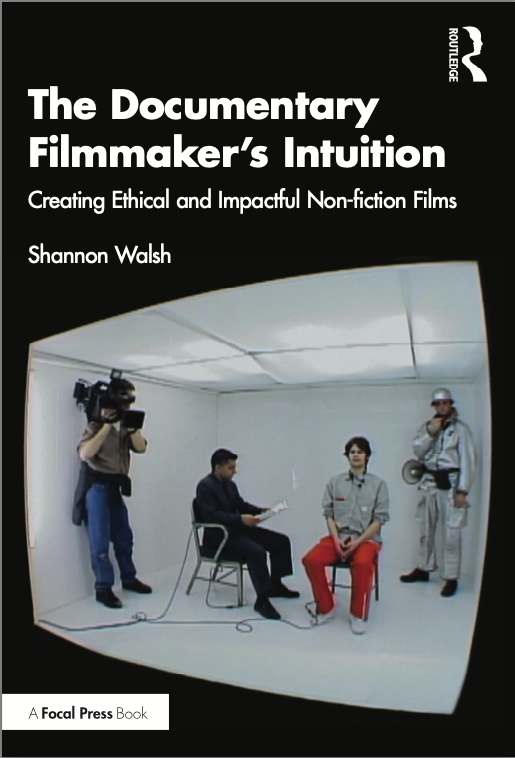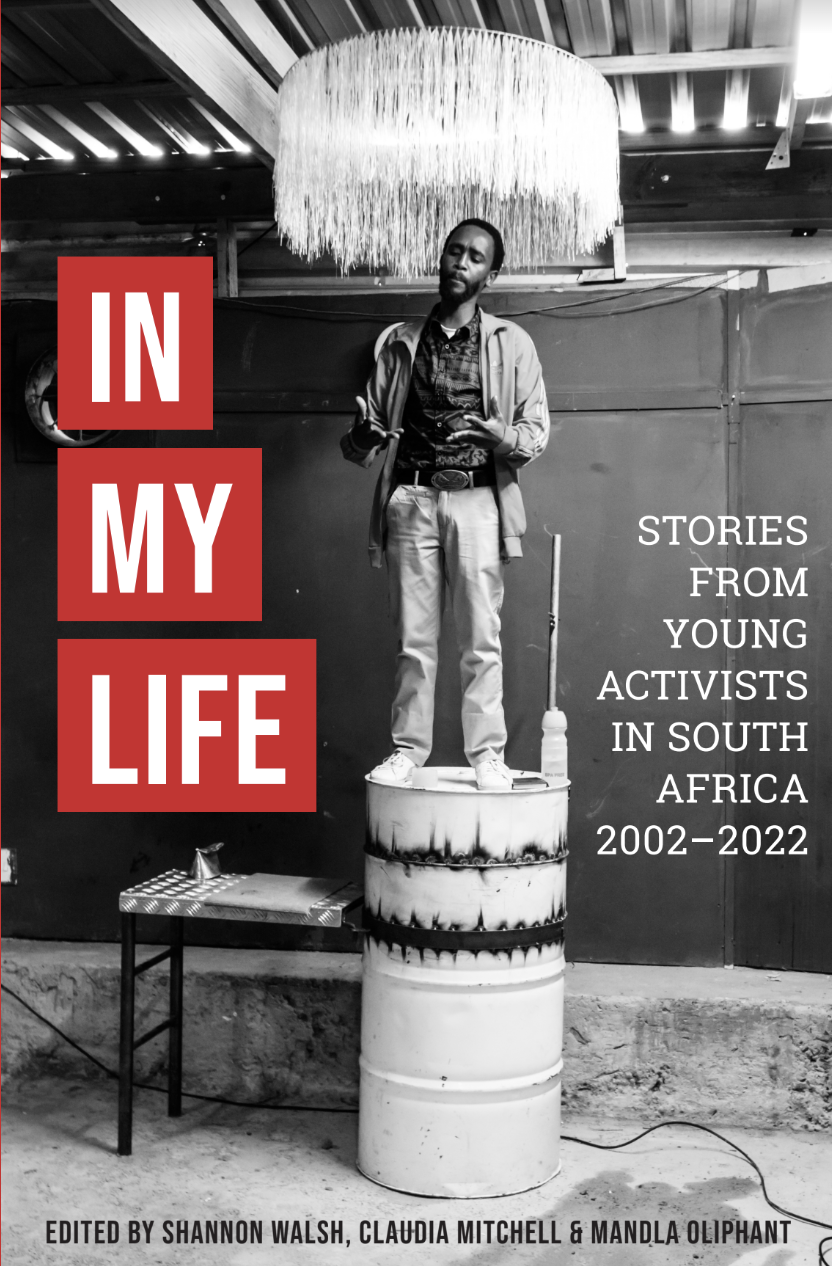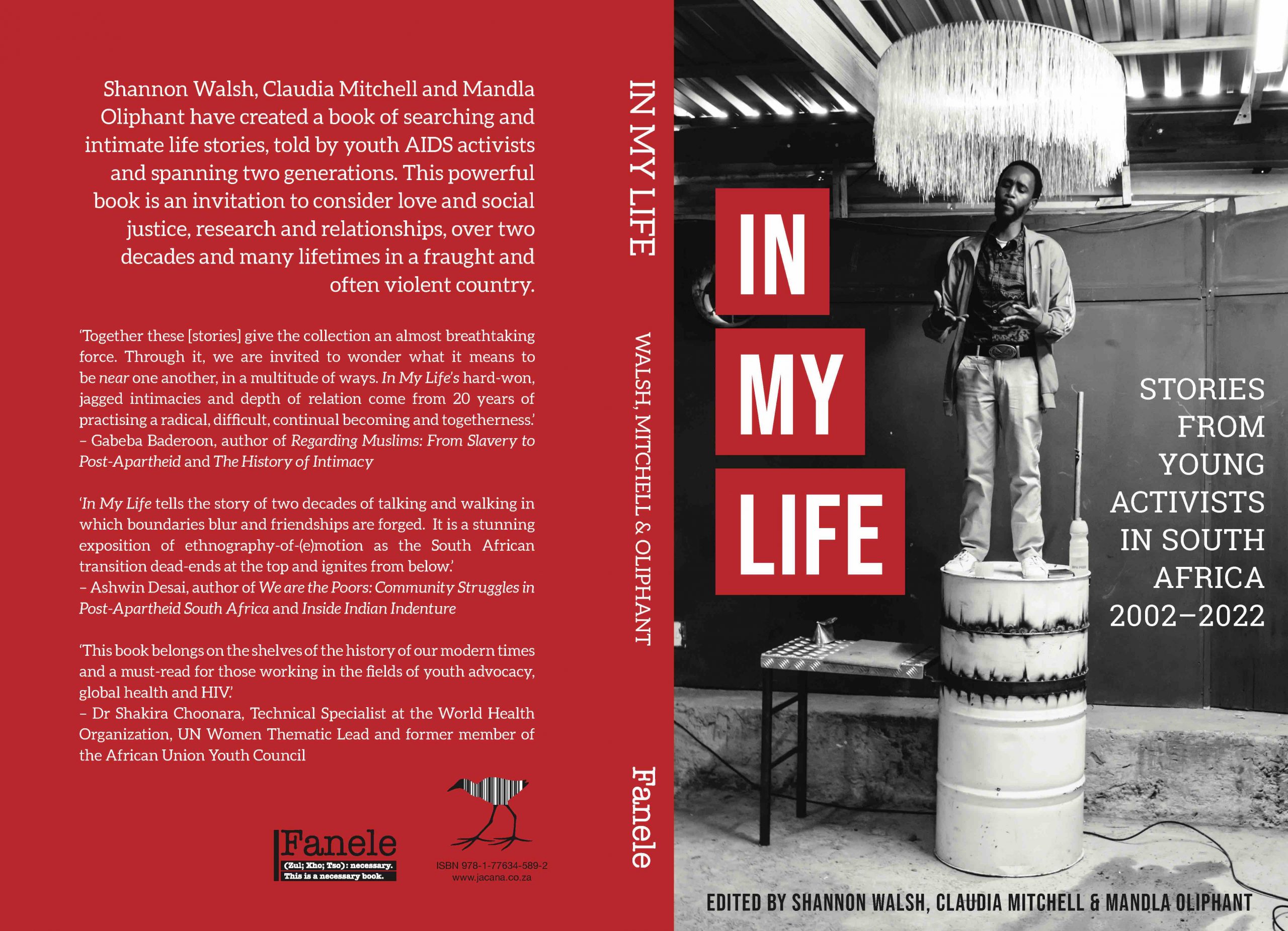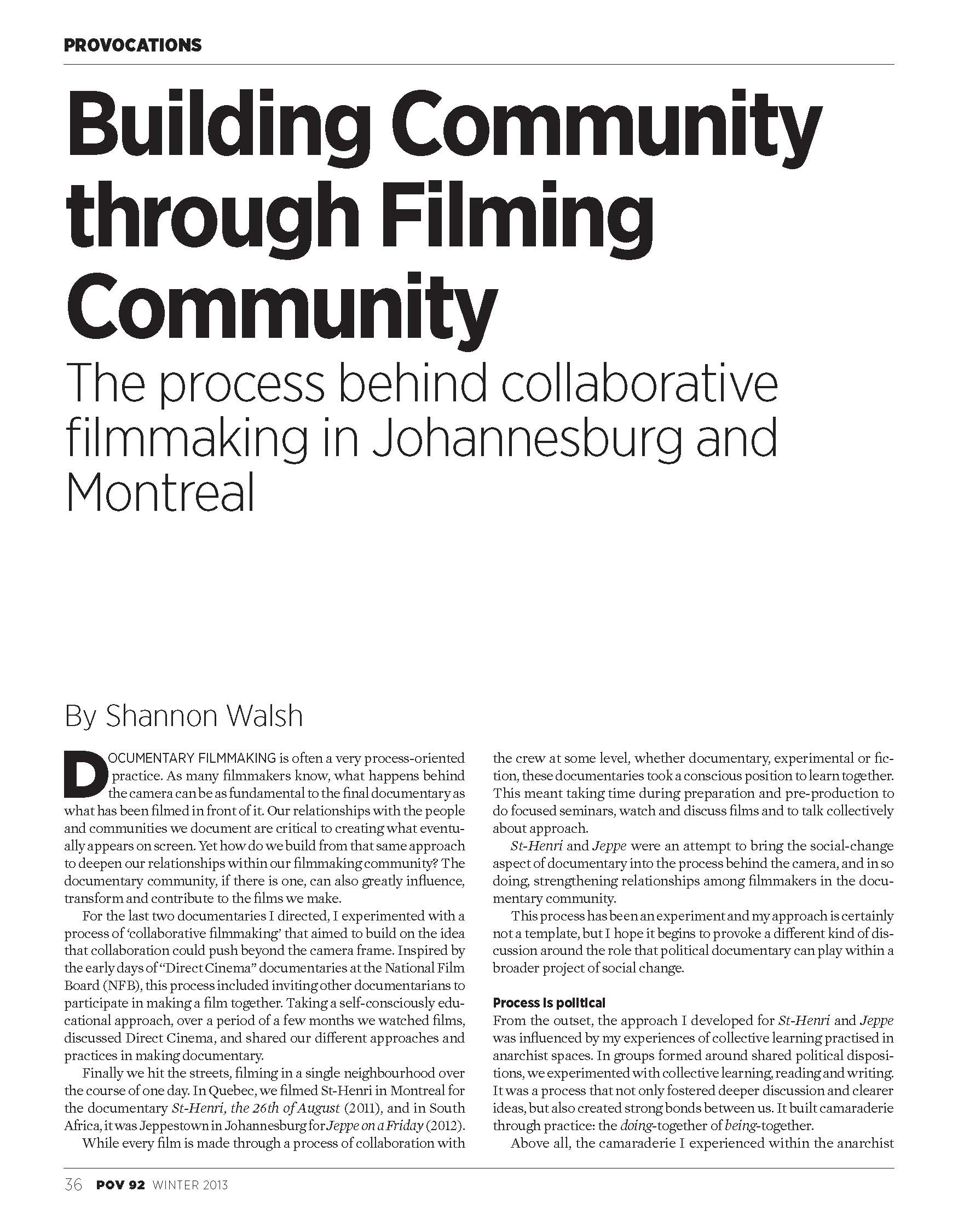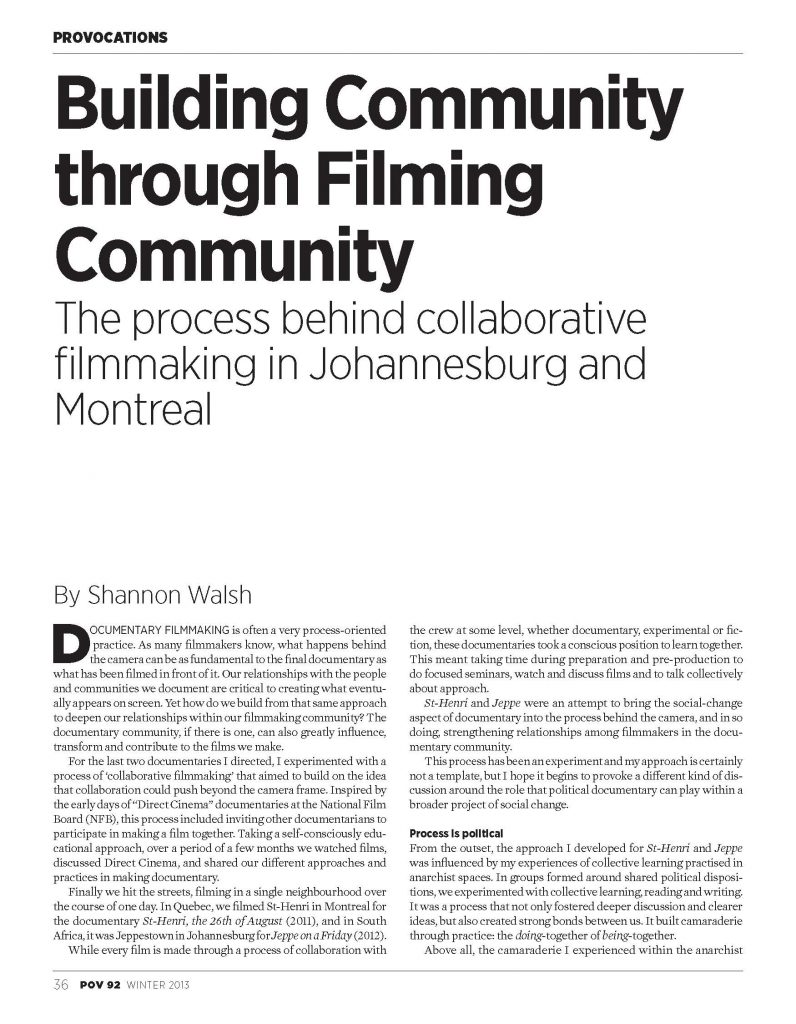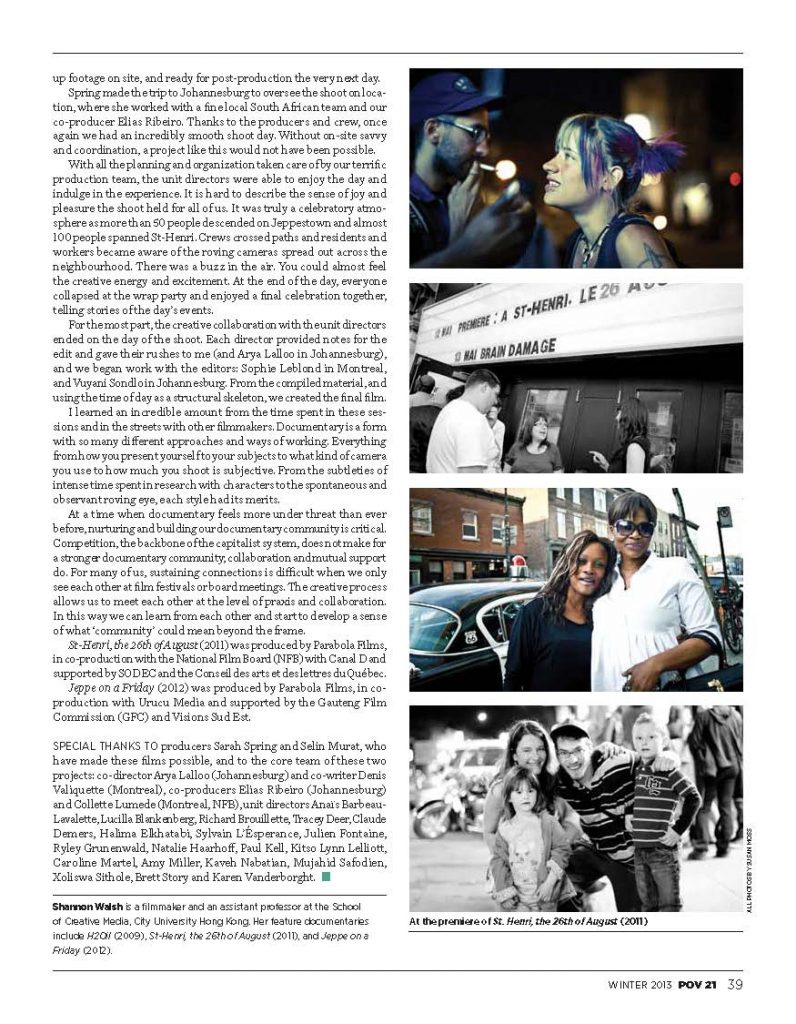This book is an introduction to the art and craft of documentary film making with a focus on ethics and impact from development through distribution. Author Shannon Walsh explores point-of-view storytelling, writing for non-fiction, and the art of social change documentary. Offering an overview of the documentary filmmaking process – from idea to pitch to a final film and impact campaign – this book provides non-fiction filmmakers with the methods required to find a voice, style, and cinematic approach to documentary filmmaking.
As the early post-apartheid enthusiasm and activism has transformed and changed, stories have been a place where one could find solace and refuge, or find ways to be connected again. The stories in In My Life reflect the shifting times and context in South Africa, the transformation of the country and the complicated stories of everyday life in the cracks of those who are artists, writers, creators, activists, researchers, teachers and many other things in between and beyond.
What does friendship have to do with racial difference, settler colonialism and post-apartheid South Africa? Ties that Bind explores how the intimacies of friendship create vital spaces for practices of both power and resistance. Combining interviews, history, poetry, visual arts, memoir and academic essay, the collection keeps alive the promise of friendship and its possibilities while investigating how affective relations are essential to the social reproduction of power.
In My Life tells the story of two decades of talking and walking in which boundaries blur and friendships are forged. It is a stunning exposition of ethnography-of-(e)motion as the South African transition dead-ends at the top and ignites from below.
-Ashwin Desai, author of We are the Poors: Community Struggles in Post-Apartheid South Africa and Inside Indian Indenture
____
[In My Life] is a book of striking life stories by youth AIDS activists in South Africa, crafted over the course of two decades, an entire generation. The collection’s 13 narratives by young people of their lives from their teens to their thirties turn into evocative and reflective accounts of the unfolding of a self. In these, In My Life shares something delicate and important: how to create a way of knowing one another deeply in our country of distances and invisibility. Their stories of ordinary nearness, of friendship, risk, trust, hurt and trying again convey the vital possibilities of everyday realities in South Africa. Together these give the collection an almost breathtaking force. Through it, we are invited to wonder what it means to be near one another, in a multitude of ways. In My Life’s hard-won, jagged intimacies and depth of relation come from 20 years of practicing a radical, difficult, continual becoming and togetherness.
-Gabeba Baderoon, author of Regarding Muslims: From Slavery to Post-Apartheid, and The History of Intimacy
